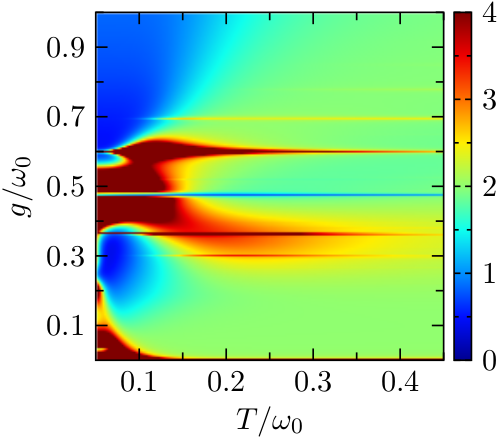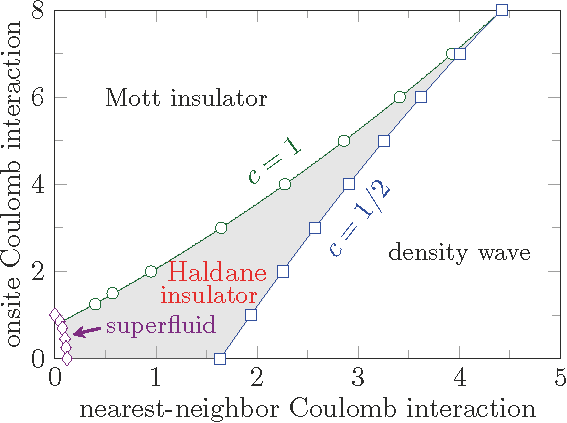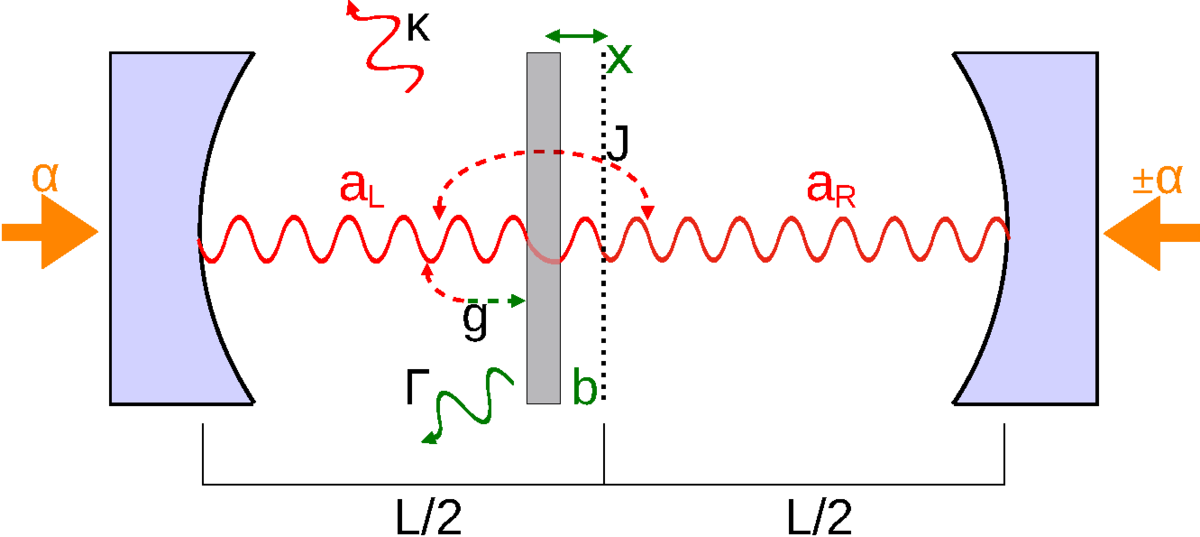Spotlight
Anyonic Haldane insulator in one dimension
We demonstrate numerically the existence of a nontrivial topological Haldane phase for the extended Hubbard model at half-filling, not only for bosons but also for anyons, despite a broken reflection parity symmetry. The Haldane insulator, surrounded by superfluid, Mott insulator and density-wave phases, is protected by combined (modified) spatial-inversion and time-reversal symmetries, which is verified within our matrix-product-state based infinite density-matrix renormalization group scheme by analyzing generalized transfer matrices. With regard to an experimental verification of the anyonic Haldane insulator state the calculated asymmetry of the dynamical density structure factor should be of particular importance.
http://arxiv.org/abs/1612.00605
Symmetry breaking oscillations in membrane optomechanics
We study the classical dynamics of a membrane inside a cavity in the situation where this optomechanical system possesses a reflection symmetry. Symmetry breaking occurs through super/sub-critical pitchfork bifurcations of the static fixed point solutions. Both bifurcations can be observed through variation of the laser-cavity detuning, which gives rise to a boomerang-like fixed point pattern with hysteresis. The symmetry breaking fixed points evolve into self-sustained oscillations when the laser intensity is increased. We complete our study by following the route to chaos for the membrane dynamics.
Dynamic Stark effect, light emission, and entanglement generation in a laser-driven quantum optical system

We calculate the emission spectra, the Glauber g(2) function, and the entanglement of formation for a few two-level emitters coupled to a single cavity mode and subject to an external laser-excitation. The system is coupled to environmental degrees of freedom which leads to dissipative dynamics. Studying the emission spectra we show that the dynamic Stark effect, i.e., the shift of spectral lines, first appears in the second order of the laser intensity. For the Glauber function, we find clearly distinguished parameter regimes of super- and sub-Poissonian light emission and explain the additional features appearing for finite laser intensity in terms of the quasienergy spectrum of the driven emitter-cavity system. Finally, we analyze the temperature and emitter-cavity coupling regimes where entanglement among the emitters is generated.


